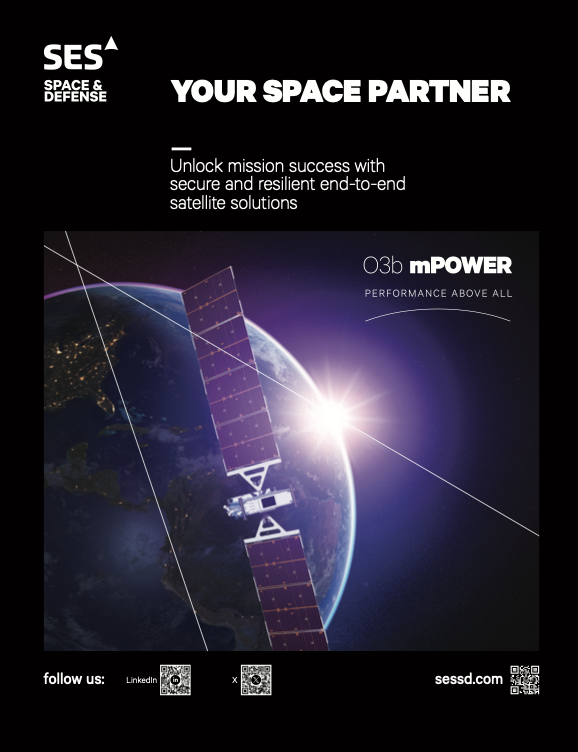Space Systems Command’s “Allied by Design” approach to international partnerships is continuing to pay dividends with new acquisition partnerships, international visitors, and exciting opportunities for collaboration.

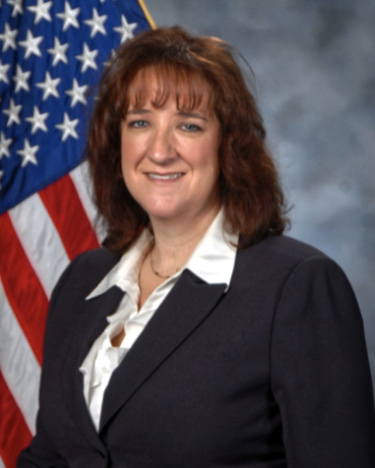
Deanna Ryals
“From a Great Power Competition perspective, the more allies we have, the more of a deterrent we are,” said Deanna Ryals, Director, International Affairs (IA) at SSC. “It’s one thing if a near-peer adversary is looking at coming after the United States, but if they’re looking at the United States plus Canada, plus Australia, plus Poland, plus the United Kingdom, plus all of our other partners, we hope that it makes them wake up and say, ‘Today is not the day.’”
IA’s Allied by Design concept seeks to engage allied nation partners in discussions as early as possible.
“The more we bring our allies and partners into our conversations, our problem-solving, and our acquisition decisions, the more we’re going to be able to solve more problems much faster. We’re looking from the perspective of a collective whole of countries on how to get after the threat – that’s going to give us an asymmetrical advantage that no one else has,” Ryals said.
Currently, SSC is engaged with 28 countries and has international affairs professionals stationed in Australia, Belgium, Germany, and Japan. Since its establishment in 2013, SSC’s International Affairs office has completed 39 agreements with 16 countries, valued at up to $5.4 billion.
That’s not to say IA is without its own particular set of headwinds.
“Classification has certainly been a problem and it’s really hindered us from doing a lot of the work with our partners that we want,” Ryals said. “But organizations such as the U.S. Office of the Secretary of Defense - Space have been pushing to update the policy to allow us to get that classification brought down lower.”
ITAR (the International Traffic in Arms Regulations, a series of U.S. government regulations that control the import and export of defense products) also continues to be a challenge.
A third hurdle is cultural. Some officials are still uncomfortable with the idea of bringing international partners into highly-classified programs. Indeed, the United States itself has historically struggled with wanting to get problems solved first before bringing allies on board, Ryals said.
“But today, that’s too late,” Ryals said. “Our allies and partners often have acquisition timelines that are similar to ours. If we wait two, three, four years while we’re trying to figure out the problem before we start talking to them, by the time we get to them, we’re asking them to run fast to catch up to us and that’s really difficult for our partners. Plus, we’re losing out on those innovative thoughts by not bringing them into the problem-solving areas early. We’ve got to bring them in at the very beginning.”
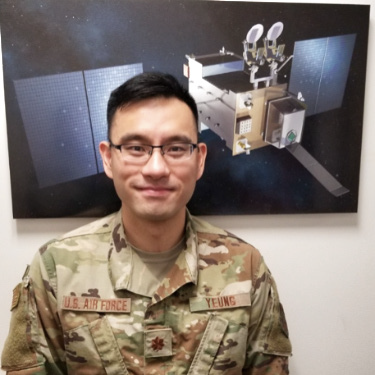
Major Nicholas Yeung
One of the most recent milestones for IA is the Deep Space Advanced Radar Capability (DARC) initiative, a trilateral agreement between the United States, Australia and the United Kingdom that will deploy three ground-based radars in the three nations. These radars will provide 24/7 coverage around the globe, looking into the Geosynchronous Orbit (GEO), said Maj. Nicholas Yeung, Chief, SSC’s International Affairs Capabilities Development Division.
“It’s a capability that is unprecedented – having the ability to have 360-degree global coverage, using our allies, is kind of a game-changer,” Yeung said.
The formal agreement was just announced in December of 2023, following the signing of a Memorandum of Understanding (MoU) between the three nations. Australia and the United Kingdom will contribute as much as $2.2 billion to the effort and all three sites will be operational by the end of the decade, Yeung said.
Another success story is the Responsive Space Capabilities MoU, an international agreement between 11 countries — Australia, Canada, Germany, Italy, the Netherlands, New Zealand, Spain, Sweden, the United Kingdom, and Norway — that supports Research, Development, Test, and Evaluate cooperative efforts, Yeung said.
This agreement has three active subordinate project arrangements.
“Not every participant country needs to be on every subordinate project, but the project arrangements are written to address specific, critical technology, such as laser crosslinks, rideshare, data fusion,” Yeung said. “And recently, we added a new project arrangement that addressed hyperspectral imaging as well as an extension of the arrangement covering data fusion.”
Laser crosslinks allow satellites to communicate with each other in space, using lasers. Rideshare programs allow multiple payloads — sometimes from different countries — to be launched into orbit on a host nation’s rocket. Data fusion is the process of correlating and “fusing” multiple data sets to make sense of the information and detect patterns. Hyperspectral imaging collects and processes information from across the electromagnetic spectrum and could be particularly useful in the area of surveillance and reconnaissance, due to its ability to collect data in all weather.
“Alone, we can’t cover every aspect of space, so having a huge network of like-minded countries to be able participate (in discussions) and address some of these other niche technologies is huge,” Yeung said.
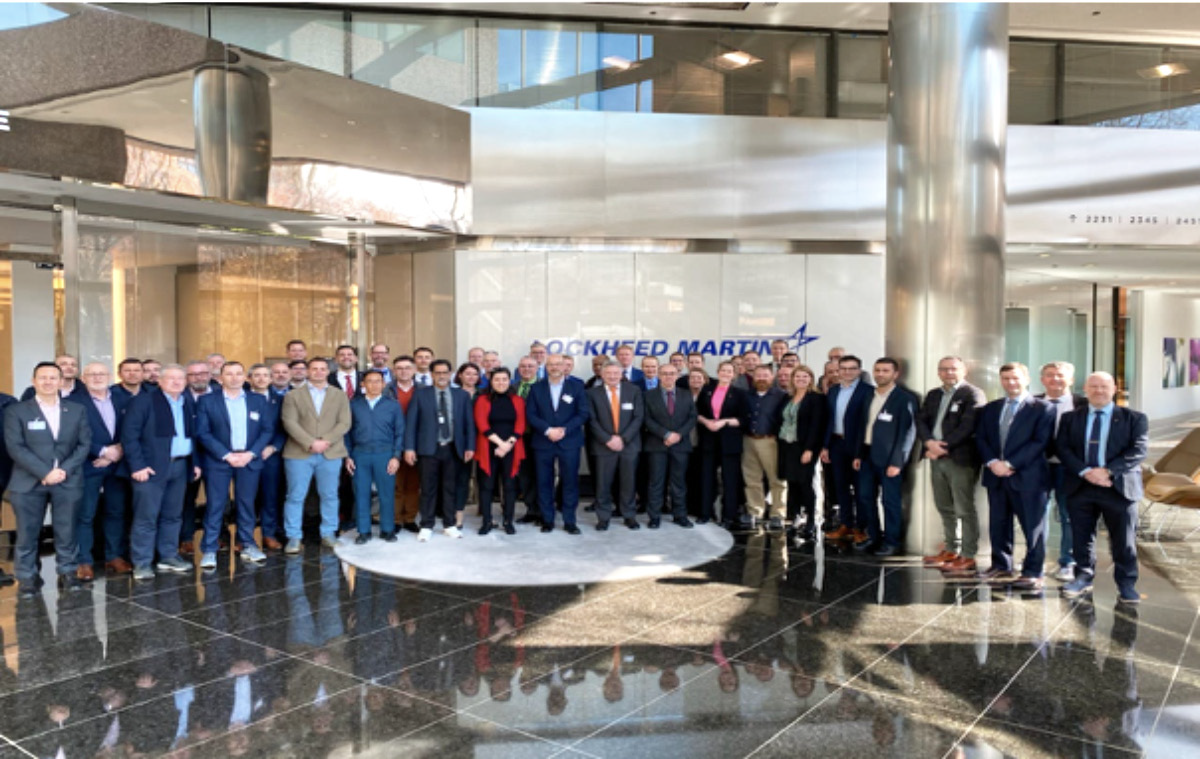 SSC/IA personnel attend the 37th NATO SATCOM Capabilities Team in Washington, D.C., with NATO partners.
SSC/IA personnel attend the 37th NATO SATCOM Capabilities Team in Washington, D.C., with NATO partners.
Japan, for example, has made addressing the problem of space debris a priority and is working on several potential technological solutions, Yeung noted.
There’s also the GCC Satcom Support Partnership (Global Commercially Contracted Satellite Communication Partnership), a bilateral agreement with Luxembourg, under the auspices of NATO, where SSC can leverage NATO as the contracting arm to procure satellite services.
“This is a complete departure from how the U.S. Department of Defense space does acquisitions in contracting,” Yeung explained. “We’re leveraging NATO to be our contracting officer in delivering a product – the only requirement to be able to do that is to have an agreement between two NATO partners, in this case, the U.S. and Luxembourg. We want to use this as a template, to not just move fast, but to move fast together with our allies. We’re all looking at that 2026 line in the sand – we have to take calculated risks, we have to have our partners on board.”
Allied bilateral engagement is critical, and SSC/IA is expanding — with a new division called Strategy and Plans — to meet the growing demand for forums and working groups for allies to meet and discuss strategies and plans, Yeung said.
“It’s having these early conversations so we can discuss technologies and standards that allies can build to,” Yeung said. “They’re looking to the U.S. to be the lead for these standards because of our robust space program and sharing that with our allies allows them to enter requirements, send that up through their governance, and coordinate their budget to contribute to our architecture or invest in areas the U.S. is not looking at.”
Two other important assets are the Unified Data Library (UDL), and the Allied Exchange Environment (AXE). The UDL is the USSF’s Cloud-based data repository that hosts more than 300 different data types, including data for space domain awareness as well as commercially acquired data, enabling the Space Force, government and allied partners access to a multitude of data sources from a centralized repository.
AXE is a new SSC project designed to create near real-time, bi-directional, machine-to-machine data sharing with international allies. AXE will create a standardized interface between the U.S. and any foreign allied partner for highly valuable, two-way operational data distribution. Leveraging the Unified Data Library’s (UDL) capabilities and cybersecurity best practices to reduce and/ or eliminate current data sharing bottlenecks, AXE would enable near real-time data sharing from the Secret UDL currently unavailable to partners.
“The UDL and AXE have given us another arrow in our quiver to be able to partner with other countries,” Yeung said. “When our partners are able to plug into the AXE and have their access managed and automated, and having this machine-to-machine link that could be huge in joint war-fighting.”
Another exciting development is the Space Data Network: the Department of Defense (DoD) is looking to create a proliferated Low Earth Orbit (LEO) SATCOM constellation from several potential vendors, together with foreign allies and partners.
“Because our commercial space industry has become so mature (other nations) are able to acquire space capabilities through FMS (foreign military sales) from us, or DCS (direct commercial sales) directly from our vendors,” Yeung said.
Foreign military sales are nothing new — the U.S. Air Force has been doing them since the 1970s — but it is a relatively new concept for the U.S. Space Force, said Maj. Simone Zacharias, chief of foreign military sales for SSC.
“We are now more willing to look at exporting some of our space capabilities,” Zacharias said. “We had locked down space power for so long – since the Cold War – but now we understand with Great Power Competition that we are not as strong alone as we are with our international partners and allies.”
USSF has been exporting some technology from some of its legacy offices such as GPS for a while and is working on exporting larger space-capable systems to international partners as well as supporting some of the current conflicts, such as the war in Ukraine, Zacharias said.
The United States has long enjoyed being the dominant power in space, but that doesn’t mean it is the only nation discovering new and innovative space technology. If other nations have new and innovative technology, the USSF wants to be in a position to acquire it, too, Zacharias said.
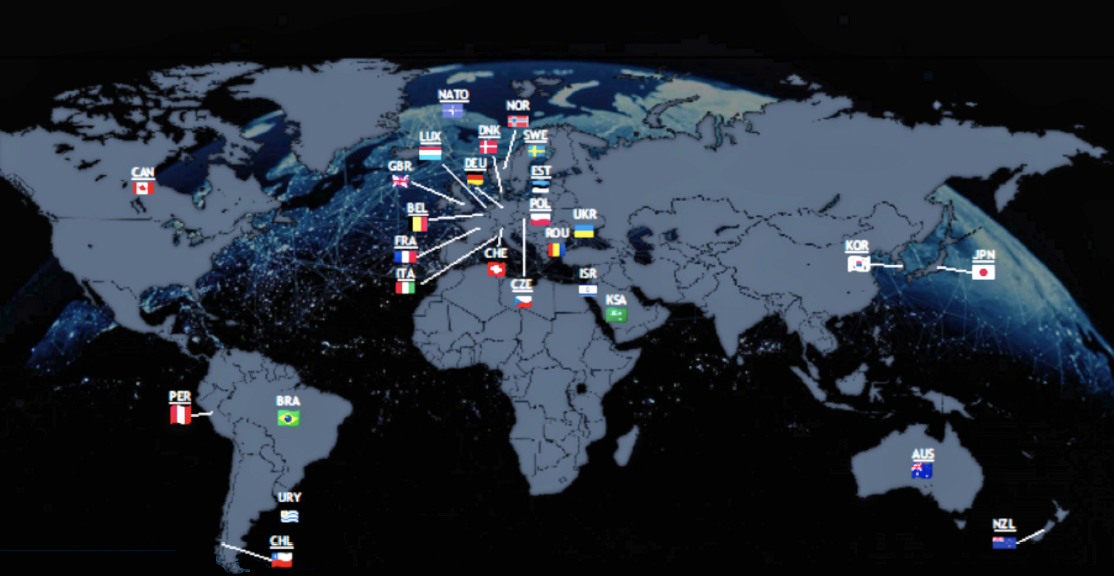
“There’s a lot of strong space industry outside the U.S. as well – the more that we know about each other the more we can make a joint decision about where to go, going forward,” Zacharias said. “I think that everyone’s coming more to the table to work together and really understanding that’s it’s an all-for-one situation.”
In the past, it was only large governments such as the United States that had the funding and the infrastructure to procure space technology, Zacharias noted, but today there is so much more commercial space industry available. Other nations are recognizing the advantages space can bring to their countries from a national security and economic standpoint and are standing up their own space commands and space-trained forces.
“Our international partners are becoming more capable of building military space capabilities,” Ryals said. “If a key ally like Australia or Canada or the United Kingdom can build a capability that the U.S. can use, then we can take those dollars and spend them elsewhere. That’s giving us a lot to think about going forward, especially in times of constrained budgets. How can we leverage our very capable partners to put capability on orbit so we can go solve the hard problems others aren’t looking at. We’re also seeing a significant uptick in national dollars for countries starting to be applied to space — even if it’s civil space, civil space can be dual-use for civil or military. So we’re seeing those dollars starting to come into countries who are starting to build up an industrial base. And the more we see the industrial base built out, the more innovation and technology developments that we’re going to see all over the world.”
“Everyone is seeing the benefits of space, and there are a lot more less-expensive options to start doing things with space, and using the benefits that space provides,” Zacharias said. “What we need from our international partners is to just start the conversation – what capabilities would they like to have? Come to the table with those ideas so we can have a conversation about exportability, whether we can do a foreign military sales case. Some of our partners may feel like they don’t want to waste our time, but we understand that they may not know what they want, or only have a vague idea. But coming to the table and having those conversations is the only way we’ll be able to arrive at something more concrete.”
International partners who are interested in foreign military sales can start with the Security Cooperation Office or Office of Defense Cooperation within the U.S. Embassy within their countries, Zacharias said.
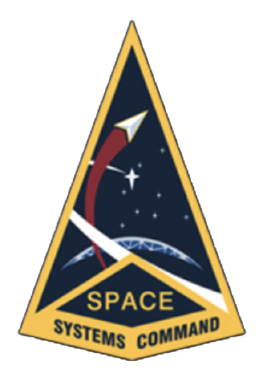
“Communication is the foundation of every opportunity,” Yeung said. “The earlier we have dialogue, the earlier we understand each other’s plans, the easier it’ll be to acquire something together. We have several forums – having partner participation in those arenas strengthens relationships and those lines of communication so we can capitalize on the fruits of our collaboration in the future.”
Space Systems Command is the U.S. Space Force field command responsible for acquiring, developing, and delivering resilient capabilities to protect our nation’s strategic advantage in, from, and to space. SSC manages a $15.6 billion space acquisition budget for the Department of Defense and works in partnership with joint forces, industry, government agencies, academic and allied organizations to outpace emerging threats. Our actions today are making the world a better space for tomorrow
Contact Space Systems Command at SSC@spaceforce.mil or follow on LinkedIn.


